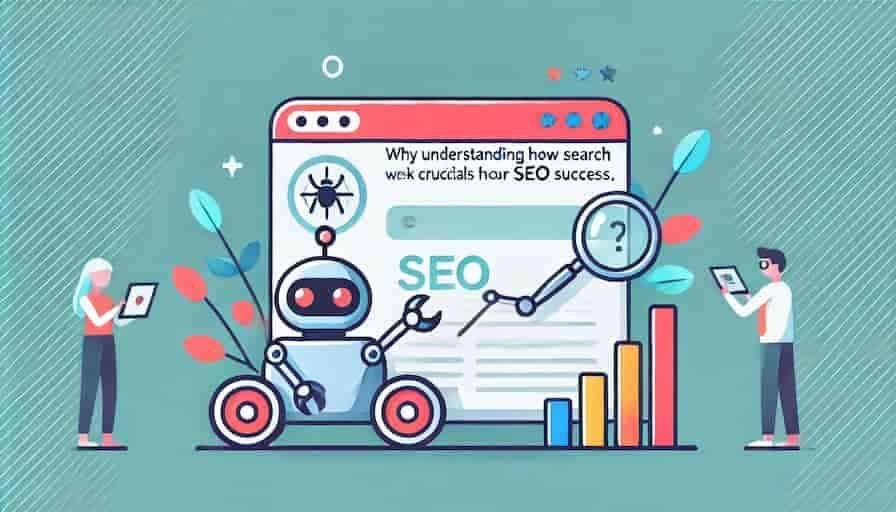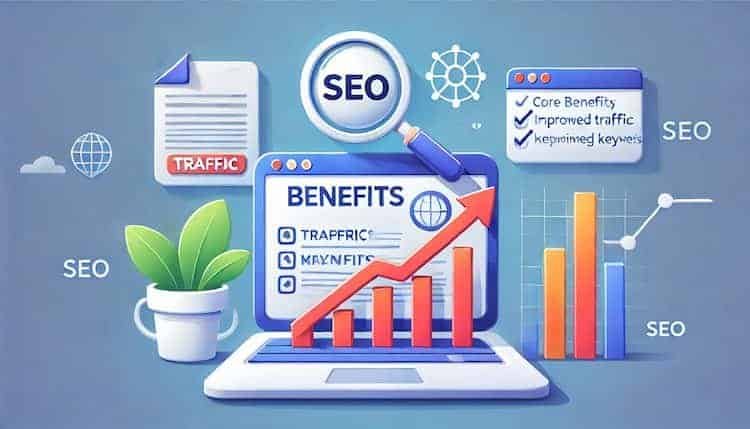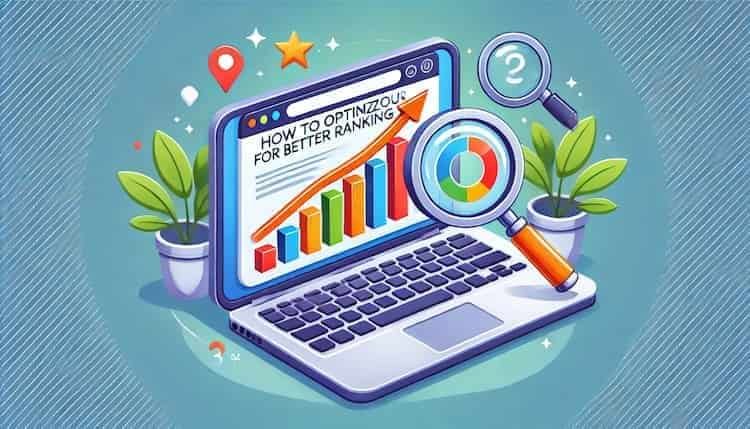How Does Search Engine Optimization Work? Learn SEO Basics.
In today’s digital-first world, Search Engine Optimization (SEO) is more than just a buzzword—it’s a necessity for businesses aiming to stand out online. This guide unpacks the core principles of SEO, explores how it works within Google Search, and highlights its vital role in crafting successful digital marketing strategies. Grasping these essentials will equip you to elevate your website’s visibility and connect with your target audience like never.

What is SEO?
Search Engine Optimization (SEO) is the art and science of improving a website’s visibility in organic search results—the unpaid listings on search engine result pages (SERPs). It focuses on creating a seamless experience for both users and search engines by addressing three key areas:
- Authority Building: Earning trust from search engines through strategies like acquiring quality backlinks, showcasing expertise, demonstrating E-E-A-T (Experience, Expertise, Authoritativeness, Trustworthiness), and maintaining a secure and user-friendly site.
- Content Optimization: Crafting valuable, relevant, and engaging content that aligns with user search intent.
- Technical Foundations: Build a website structure that search engines can easily crawl and index; use clean code, fast-loading pages, and mobile-friendly designs.
By focusing on optimizing these critical elements, SEO enables websites to achieve higher visibility in search results while aligning with the needs of their audience. This organic growth strategy not only enhances discoverability, but also fosters trust and engagement with users. Unlike paid strategies, SEO emphasizes long-term sustainability, helping businesses establish a strong online presence and reach their goals effectively.
Importance of SEO in Digital Marketing
In the realm of digital marketing, SEO is a cornerstone for enhancing a website’s visibility in search engine results. With search engines driving over 53% of all website traffic (BrightEdge), an effective SEO strategy can significantly increase organic traffic, strengthen brand awareness, and improve conversion rates.
Unlike paid search methods, which require ongoing investment, SEO offers long-term results and scalability. Businesses that prioritize SEO often enjoy higher ROI compared to other digital marketing channels. For example, companies like Airbnb and Etsy have achieved exponential growth by focusing on SEO as a core component of their digital strategy.
By improving how users find and interact with your website, SEO not only attracts visitors but also builds trust and credibility—key elements of long-term online success.
Differentiating SEO from Other Digital Marketing Strategies
SEO differs significantly from other digital marketing strategies, like Search Engine Marketing (SEM) and Pay-Per-Click (PPC) advertising. SEM encompasses both paid and organic strategies to improve visibility in search results, while PPC specifically involves businesses bidding for ad placements and paying for each click.
For example, a company running a PPC campaign might spend $2–$5 per click for competitive keywords like “best project management software.” This can drive immediate traffic, but at a cost.
In contrast, SEO focuses on achieving higher rankings organically by optimizing content, building authority through backlinks, and improving website performance. While PPC delivers quick results, SEO offers sustainable growth. Many businesses combine both strategies, using PPC for immediate visibility and SEO for long-term traffic and brand recognition.
Why Understanding How Search Engines Work is Crucial for SEO Success

Mastering Search Engine Optimization (SEO) starts with understanding the mechanics of search engines. Platforms like Google and Bing are the backbone of online visibility, using advanced algorithms to determine which content appears at the top of search results. These computer programs consider things like how useful, trustworthy, and easy to use a website is to give users the best results.
When website owners grasp how search engines work—how they crawl, index, and rank content—they can align their strategies to meet these expectations. This not only improves rankings but also enhances website usability and user satisfaction. For more insights, refer to Google’s Search How It Works, which details the entire process of crawling, indexing, and ranking.
The Connection Between Search Engines and SEO
The processes behind search engines and the goals of SEO are deeply connected:
- Crawling and Indexing: Search engines use bots to navigate the web, discover content, and store it in their index. Optimizing your site with tools like XML sitemaps, clean internal linking, and a well-structured robots.txt file ensures search engines can easily find and understand your content.
- Ranking Factors: Modern algorithms consider hundreds of signals, such as keywords, backlinks, site speed, and mobile-friendliness, to rank content. SEO focuses on fine-tuning these elements to maximize visibility.
- Algorithm Updates: Search engines evolve constantly, with updates like Google’s BERT and Core Web Vitals reshaping ranking priorities. Staying informed and adapting to these changes ensures your website remains competitive in search results.
By understanding these interconnections, you can craft a robust SEO strategy that is both data-driven and aligned with search engine priorities, ensuring long-term success.
Key Components of SEO Optimization
On-Page SEO Techniques: Keywords, Content, and Meta Tags.
On-page SEO is the foundation of any successful optimization strategy, focusing on elements within your website that directly influence search engine rankings. Strategic keyword usage is at the heart of on-page optimization. This involves identifying search terms that your target audience frequently uses and integrating them naturally into your content, headings, and subheadings.
Another crucial aspect is crafting high-quality content that satisfies user intent by providing value, solving problems, or answering questions effectively. Additionally, optimizing meta tags—such as title tags and meta descriptions—ensures that search engines and users quickly understand the page’s purpose. Well-structured URLs and the use of relevant internal links further improve both crawlability and user navigation.
Off-Page SEO Strategies: Building Authority with Backlinks.
Off-page SEO extends beyond your website, focusing on establishing authority and trust through external signals. High-quality backlinks from reputable and relevant websites act as “votes of confidence” for your content, signaling to search engines that your website offers valuable information. For instance, earning backlinks from industry-leading sites or reputable blogs can significantly improve your credibility.
Beyond link-building, engaging with audiences through social media platforms and participating in online communities (like forums and Q&A platforms) helps drive traffic and build brand awareness. Consistent efforts in guest blogging or collaborating with influencers also contribute to building a robust off-page SEO profile.
The Role of Technical SEO: Enhancing Website Performance
To achieve higher rankings, your site must not only look good but also function efficiently. This is where Technical SEO plays a key role, ensuring that your website’s backend infrastructure is optimized
Technical SEO ensures that your website’s backend infrastructure is optimized for both search engines and users. This includes:
- Site Speed: Faster loading pages improve user experience and increase the likelihood of higher rankings.
- Mobile Responsiveness: With mobile-first indexing, ensuring that your site is mobile-friendly is non-negotiable.
- Secure Connection (HTTPS): A secure website boosts user trust and satisfies search engine ranking criteria.
Another essential aspect is monitoring Google’s Core Web Vitals, which are metrics Google uses to measure user experience. These include:
- Largest Contentful Paint (LCP): Measures loading performance. Ideally, the main content of a page should load within 2.5 seconds.
- First Input Delay (FID): Tracks interactivity, such as how quickly a page responds to user actions like clicks. A good FID score is under 100 milliseconds.
- Cumulative Layout Shift (CLS): Evaluates visual stability by measuring unexpected page shifts. For example, if a button moves while the page loads, it could lead to poor usability. Aim for a CLS score under 0.1.
Improving these metrics involves actions like optimizing images, minimizing JavaScript, and using a content delivery network (CDN). These not only boost user satisfaction but also positively impact search rankings.
Another key technical factor is implementing structured data (Schema markup) to provide search engines with additional context about your content. For instance:
- An FAQ schema can display questions and answers directly in search results, improving visibility and click-through rates.
- A Product schema highlights prices, reviews, and availability, making e-commerce listings stand out.
Additionally, managing your robots.txt file and creating comprehensive XML sitemaps guide search engine crawlers to your most important pages. Regular technical audits using tools like Google Search Console, PageSpeed Insights, and Lighthouse help identify issues, such as broken links or slow-loading pages, ensuring your website is optimized for both search engines and users.
Benefits of SEO for Websites

Driving Organic Traffic and Improving Website Visibility.
One of the primary benefits of SEO is its ability to drive organic traffic to a website. By optimizing for relevant keywords and enhancing content quality, businesses can improve their visibility on search engines like Google. This increased visibility leads to higher click-through rates and greater user engagement. Ultimately, a strong SEO strategy enables websites to attract more visitors without relying on paid search campaigns, fostering sustainable growth.
Cost-Effectiveness Compared to Paid Search Campaigns.
SEO is often more cost-effective than paid search campaigns, providing long-term benefits that outlast temporary ads. While PPC requires continuous investment for visibility, organic search results achieved through effective SEO can yield consistent traffic over time. This makes SEO an appealing option for businesses seeking to maximize their marketing budget. By investing in SEO, website owners can cultivate a strong online presence without incurring ongoing advertising costs.
Enhancing User Experience Through SEO.
SEO not only focuses on search engines but also prioritizes user experience. By optimizing website structure, content, and navigation, businesses can create a seamless experience for visitors. Enhanced user experience leads to lower bounce rates and higher engagement, which are favorable signals to search engines. Thus, through effective SEO practices, websites can ensure that both users and search engines find their content valuable, improving overall search rankings.
Tools and Resources for SEO

Essential SEO Tools for Website Optimization.
To enhance your presence in search results, utilizing essential SEO tools is crucial. Tools like Google Search Console and SEMrush provide valuable insights into site performance. They help website owners analyze keywords, monitor rankings, and identify areas for optimization. By leveraging these tools, businesses can streamline their SEO work, boost visibility on search engines, and improve overall user experience.
Using Analytics to Measure and Track SEO Success.
Analytics play a vital role in measuring and tracking SEO success, as they provide data on user behavior and engagement. By utilizing tools like Google Analytics, website owners can analyze traffic sources, bounce rates, and conversion metrics. This information helps businesses refine their SEO strategies, ensuring they effectively align with user search terms and improve their standing in search engine results pages.
Free and Paid Resources to Learn and Improve SEO Skills.
Both free and paid resources are available for those looking to learn and improve their SEO skills. Platforms like Moz and HubSpot offer comprehensive guides and tutorials, while courses on Udemy or Coursera provide structured learning paths. By investing time in these resources, individuals can gain a deeper understanding of search engine optimization, ultimately enabling them to optimize websites effectively for better rankings.
How to Optimize Your Website for Better Rankings

Steps to Improve How Your Site Looks in Google Search.
Improving how your site looks in Google Search requires a strategic approach to optimization. This includes crafting compelling meta descriptions, utilizing relevant keywords, and optimizing URLs. By ensuring that your site appears attractive on the search results page, you can increase click-through rates, helping search engines better understand the value of your content and enhancing your ranking potential.
Strategies for Effective SEO Promotion and Website Traffic Growth.
To effectively promote your website and grow traffic, diverse strategies should be employed. Incorporating both on-page and off-page SEO techniques is essential, including creating high-quality content that resonates with users. Additionally, engaging in social media marketing can amplify your reach, driving more organic search traffic and improving your presence in search results across various platforms.
Integrating SEO with Social Media Marketing for Maximum Impact.
Integrating SEO with social media marketing can significantly enhance your online presence. By sharing optimized content on social platforms, businesses can drive traffic back to their websites, which helps search engines understand the relevance of their content. This synergy not only boosts engagement but also contributes to higher rankings in search results, ultimately maximizing the impact of both strategies.
The Role of Algorithms and Updates in SEO
How Google’s Algorithm Updates Impact Search Results.
Google’s algorithm updates significantly impact search results, dictating how content is ranked. These updates often focus on improving user experience, emphasizing the importance of quality content and relevance. Website owners must stay informed about these changes to adapt their SEO strategies accordingly, ensuring their sites continue to show up in search results and maintain visibility on search engines.
Staying Up-to-Date with SEO Best Practices.
Staying up-to-date with SEO best practices is essential for maintaining a competitive edge. Regularly following authoritative sources such as the Google Search Central Blog helps website owners understand evolving trends and algorithm changes. By continuously refining their SEO work and adapting to best practices, businesses can improve their search rankings and optimize their presence in search results effectively.
Adapting to Changes in the Search Engine Landscape.
As the search engine landscape continues to evolve, adapting to changes is crucial for sustained success. This entails not only embracing new SEO techniques but also understanding shifting user behaviors and search algorithms. By being proactive in adjusting strategies, website owners can enhance their content’s relevancy and ensure it resonates with both users and search engines, ultimately improving their ranking in search results.
Long-Term SEO Planning and Maintenance
Creating a Scalable SEO Strategy for Sustained Growth.
Developing a scalable SEO strategy is crucial for sustained growth in visibility on search engines. This involves creating a comprehensive plan that encompasses both on-page and off-page SEO techniques tailored to evolving user behaviors and search engine algorithms. By regularly updating your content and optimizing for relevant keywords, website owners can build a strong foundation that enhances organic search rankings over time.
Regular SEO Audits to Refine and Improve Rankings.
Conducting regular SEO audits is essential for refining and improving a website’s rankings in search results. These audits help identify technical SEO issues, such as slow loading times and crawl errors, that may hinder performance. By utilizing tools like Google Search Console, website owners can analyze their SEO work, ensuring that their strategies align with the latest search engine guidelines and user expectations.
Balancing Organic and Paid Search Efforts for Maximum ROI.
Balancing organic and paid search efforts is vital for maximizing return on investment (ROI). While organic search results provide long-term benefits, integrating paid search can boost immediate visibility on search engines. By strategically allocating resources between SEO and PPC, businesses can effectively reach their target audience, driving traffic and improving overall presence in search results without compromising budget efficiency.
Advanced SEO Techniques for Better Results
Leveraging Technical SEO for Faster Loading Times and Mobile Optimization.
Leveraging technical SEO is essential for enhancing website performance, particularly in terms of loading times and mobile optimization. Search engines prioritize user experience, making it critical for sites to load quickly and function seamlessly on mobile devices. By optimizing elements such as images, scripts, and server responses, website owners can ensure that their content is accessible, helping search engines better understand and rank their pages effectively.
Using Advanced SEO Tools to Analyze Competitors and Trends.
Utilizing advanced SEO tools is key to analyzing competitors and identifying trends in search marketing. Tools like SEMrush or Ahrefs provide insights into keyword rankings, backlink profiles, and overall site performance. By understanding how competitors optimize their content, website owners can refine their strategies, discover new opportunities, and stay ahead in the competitive landscape of organic search results.
Structured Data and Rich Snippets for Enhanced Visibility.
Implementing structured data and rich snippets is an advanced SEO technique that enhances visibility on search engines. By providing additional context about a webpage’s content, structured data helps search engines better understand the information presented. This can lead to rich snippets appearing in search results, which improve click-through rates and provide users with valuable insights, thereby increasing traffic to the site.
Common SEO Mistakes to Avoid
Overlooking Technical SEO Issues That Hurt Rankings.
Overlooking technical SEO issues can significantly hurt a website’s rankings in search results. Problems such as broken links, slow loading times, and improper indexing can impede search engines’ ability to crawl and understand a site. Website owners must prioritize technical SEO audits to identify and rectify these issues, ensuring their content is easily accessible for both users and search engines alike.
Keyword Stuffing and Low-Quality Content Pitfalls.
One of the most common mistakes in SEO is keyword stuffing, which can lead to penalties from search engines. Instead of focusing solely on keyword frequency, businesses should aim to create high-quality content that genuinely addresses users’ search terms. By prioritizing value over volume, website owners can improve their chances of ranking higher in organic search results and enhancing user experience.
Ignoring Backlink Quality and Spammy Links.
Ignoring the quality of backlinks can severely impact a website’s authority and ranking in search results. While acquiring numerous links may seem beneficial, spammy or low-quality backlinks can harm a site’s reputation. Website owners should focus on building a diverse portfolio of high-quality backlinks from reputable sources, reinforcing their credibility and improving their visibility on search engines like Google.
Conclusion
Mastering Search Engine Optimization (SEO) involves much more than just sprinkling keywords throughout your content. By understanding how search engines crawl, index, and rank pages—and continuously refining your on-page, off-page, and technical SEO strategies—you can achieve long-term success in search results.
Remember, SEO is an ongoing process: staying informed about algorithm updates, Core Web Vitals, and user behaviors will keep you ahead of the curve. Looking to improve your website’s SEO? Contact us for expert guidance or explore our other resources to learn more.
Frequently Asked Questions About SEO
How does SEO differ from traditional marketing?
SEO focuses on improving your website’s visibility in search engines to drive organic traffic, while traditional marketing often relies on outbound strategies like advertisements or print media. SEO is a long-term investment with measurable results, unlike many traditional methods.
Is it possible to do SEO without using tools?
While tools make SEO easier by providing insights into keywords, rankings, and technical performance, basic SEO can be done without them. For example, writing high-quality, relevant content and ensuring your website loads quickly are practices you can implement without advanced tools.
What are long-tail keywords, and why are they important?
Long-tail keywords are specific phrases that target niche topics or user intent, such as “how to optimize a blog for SEO” instead of just “SEO.” They’re important because they face less competition and often attract highly targeted traffic.
How do mobile devices impact SEO?
Search engines prioritize mobile-friendly websites due to the rise in mobile users. A mobile-responsive design, fast loading speed, and easy navigation are essential for improving your rankings and user experience on mobile devices.
What are Core Web Vitals, and why do they matter?
Core Web Vitals are performance metrics that measure user experience, including page load speed (LCP), interactivity (FID), and visual stability (CLS). Improving these metrics enhances both user satisfaction and your rankings on search engines.
How does SEO help small businesses compete with larger companies?
SEO allows small businesses to focus on niche keywords and local optimization to reach their target audience. Unlike expensive paid ads, SEO offers cost-effective, long-term growth by building authority and delivering value to users.
How can I track the success of my SEO efforts?
You can track SEO success by monitoring metrics like organic traffic, keyword rankings, bounce rates, and conversion rates using tools such as Google Analytics, Search Console, and SEMrush. Regular audits also help refine strategies.
Can social media activity improve my SEO rankings?
While social media signals don’t directly influence rankings, they can drive traffic to your website and boost visibility. Sharing optimized content on platforms can enhance brand recognition and encourage backlinks, indirectly improving SEO.
Great article! It’s fascinating how strategic thinking in poker mirrors the creativity required in AI art tools like Ghibli AI. Both demand precision and vision.